Generating Details
Details serve to achieve a realistic visual representation of the terrain. You can treat them as layers (or masks) specifying where the additional features (such as rocks, sand, etc.) are located on the primary surface. To generate details, you need to use landcover data.
Let's review the process of generating details.
The process, in general, can be seen as picking the specific data from the data source with the help of filters to create a mask.
1. Adding a Landcover Data Source#
-
In the Sandworm window, Sources panel:
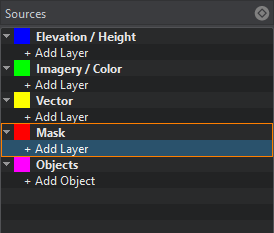
- Clicking on Mask opens the window for adding Slots. Slots are designed to organize data.
- Clicking on + Add Layer provides the toolset for uploading landcover data.
-
When adding a layer, define the type of Data Source to be used: Assets or External Files and click Import.
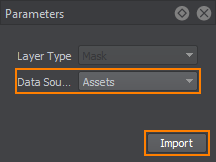
- In the window that opens, select the landcover data source to be used as a Mask. R8 and RGB8 Mask textures are supported.
When the Mask is added, its image is displayed atop all the layers in the Preview panel (you may change the order of layers display by RMB click on a layer in the list of sources), and the Mask layer parameters become available.
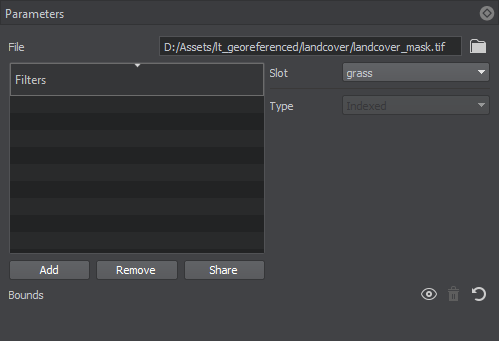
2. Specifying Filters#
-
Add filters that will select the areas from the data source for each type of landcover object you will generate. Click the Add button in the Filters window of the Parameters panel.
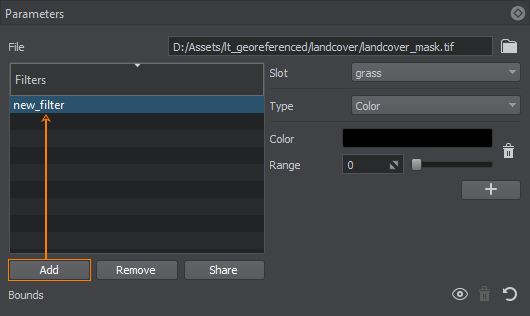
Double-click on the filter to specify a filter name. To remove a filter, use the Remove button. You can add as many filters as necessary.
The Share button allows shared use of the filter among Masks. Select the Mask that will share this filter in the pop-up window. Changes in a shared filter will be applied to it in all Masks.
- Select a slot from those created by you (Inputs -> Mask).
-
For every filter, set a type to select particular data from the landcover data source. The following types of filters are available:
-
Indexed — select a particular color index from the list of available ones in the source raster image. You can also specify the color range by indices (from color to color).

-
Single Channel — select a channel of the source raster image.
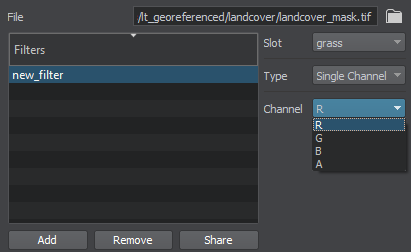
-
Color — set a particular color taken from the source raster image and adjust the Range for it, thus defining the suitable deviation from the specified color within the range [0, 255].
Click the color to open the color settings:
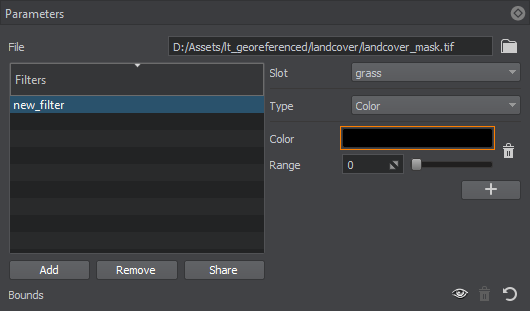
Select the color from available or click Pick Screen Color to select the color from the image in the Preview panel:
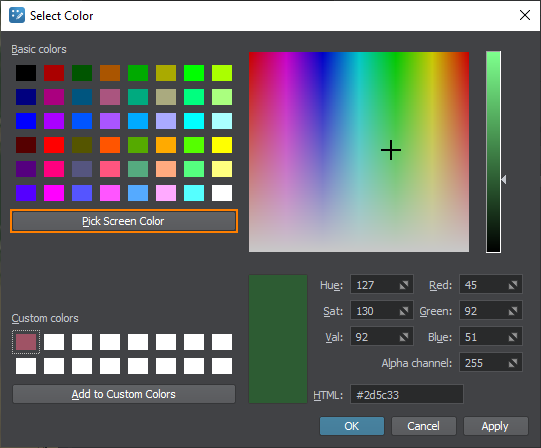
-
This is it. The data for details are ready, and after terrain generation, they will be available as the terrain details.
Generating Details#
Now you need to configure the output settings and generate (or regenerate) the details by clicking the Generate button.
The generated details are available in your project and can be configured as you need, depending on the output terrain object selected:
- Configuring details of Object Landscape Terrain
- Configuring details of Object Terrain Global:
 video tutorial
video tutorial